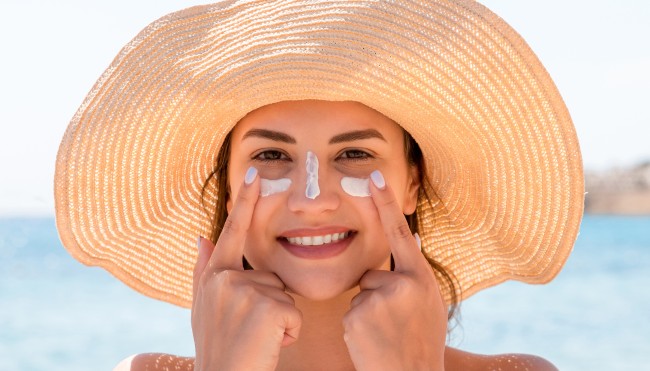Sunscreen Safety: What’s really in your sunscreen?
Ever ducked into the pharmacy to quickly grab some sunscreen, only to find yourself feeling overwhelmed?
There’s no shortage of sunscreen on the market these days and while choosing one seems easy, it can be confusing, especially if you’re looking for a safe option, free of nasty ingredients.
Chemical or Physical?
When it comes to sunscreen, there are two main types: chemical and physical.
Chemical sunscreens are by far the most common. Their active ingredients, unsurprisingly, are chemical ones, and they usually include some combination of: oxybenzone, avobenzone, octisalate, octocrylene, homosalate, and octinoxate. Chemical sunscreens rub in easily and absorb UV rays as they reach your skin.
Physical sunscreens, on the other hand, contain mineral ingredients – titanium dioxide and zinc oxide. They create a physical barrier which reflects UV rays and prevents them from penetrating the skin. Physical sunscreens are thicker and more difficult to rub in but new technology is making them easier to apply. So which is safer? Well, as far as active ingredients go, you’re definitely better off going for a physical sunscreen. According to the EWG (an authority on safe products for human consumption and the environment), some chemical filters may act as endocrine disruptors which mess with your hormones – oxybenzone, in particular, gets a bad rap.
Chemical sunscreens are also more likely to cause allergic reactions. Physical sunscreens irritate less and generally speaking are the safer option, however, there are some concerns surrounding the use of mineral nanoparticles. The good news is nanoparticles don’t penetrate the skin but they can be inhaled. That’s why they’ve been approved for use in lotions but not spray and loose powders. As a rule, stick to rub on lotions, spray formulas can be inhaled inadvertently and damage sensitive lung tissue. And while you might think application is easier, you’re less likely to apply enough sunscreen with a spray.
Check out a breakdown of the most common active ingredients in sunscreen and their toxicity concerns in the EWG’s report here for more info.
Other Ingredients to avoid
Of course, there’s much more to sunscreen than the active ingredients. And, as with cosmetic and personal care products in general, it’s important to check the label for other potential baddies. Look out for synthetic preservatives like methylisothiazolinone (MI) (which can cause contact allergies), synthetic fragrances, silicones, and petro-ingredients. Also, watch out for products which contain vitamin A (retinal palmitate) which can speed up the growth of cancerous tumors when exposed to sunlight.
DIY Natural Sunscreen!
Still questioning the virtues of commercial sunscreen? Get creative and make your own. It’s super easy and takes as few as 3 ingredients – zinc oxide powder, coconut oil, and beeswax. Heat, mix, store et voila! Just be careful not to inhale any zinc oxide powder in the process. For more detailed instructions, check out blog posts like this one by WellnessMama or this one at Don’t Waste the Crumbs.
And, remember there’s more to sun safety than a good sunscreen! The best way to avoid sunburn is to stay out of the sun, especially at peak hours between 11 am and 3 pm. Seek out shade or cover up with protective clothing like hats and sunglasses. Be sure to apply sunscreen in advance, reapply regularly, particularly after swimming, and make sure you’re applying enough (about 6 full teaspoons for adults) to start.





